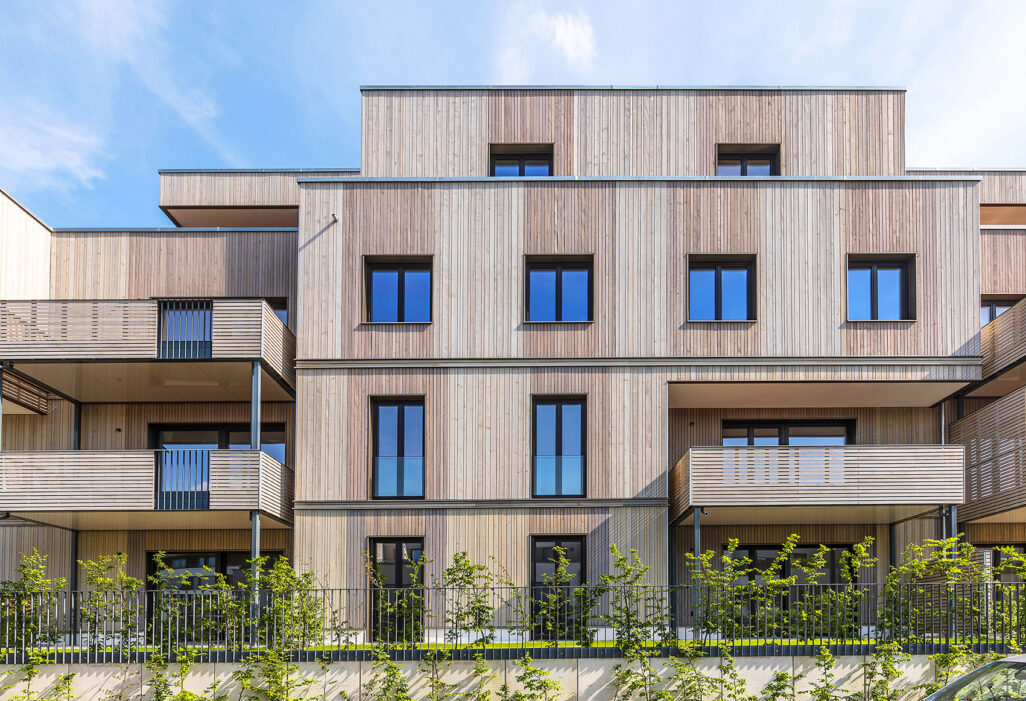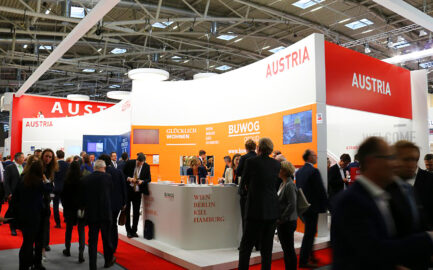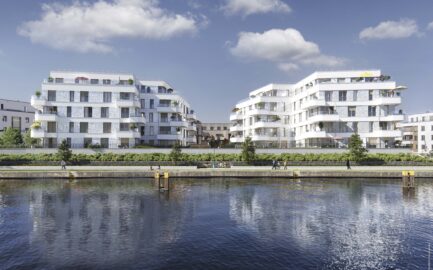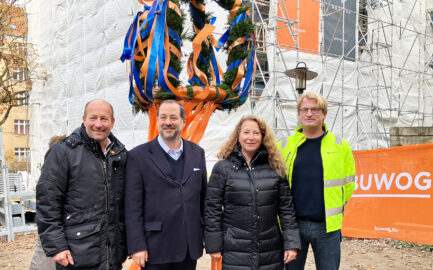BUWOG is a new partner of the COALITION for TIMBER CONSTRUCTION initiative and is a reinforcement to the joint commitment to wood as the building material of the future.
Wood as a building material is trending, as it stores CO2 from the atmosphere and is an important building block for decarbonisation. And what’s more: wood means a healthy residential environment and ensures much faster construction – especially when planning and building in series.
As a new partner of the COALITION for TIMBER CONSTRUCTION, BUWOG therefore underscores its commitment to sustainable construction. The aim of the initiative is the long-term establishment of wood as an environmentally friendly and resource-saving building material in the construction industry and the simplification of relevant regulations. For example, the coalition advocates that the market-based incentives for the transformation to more timber construction be supported with separate funding from the federal government. Forest transformation is the basis for a functioning value chain. The coalition is organisationally settled within the DAPB, a German political consulting agency. As the initiator, DAPB directs and coordinates the activities of the coalition’s ambassadors and partner companies.
Establishing timber construction in multi-level buildings
Lorenz Nagel, spokesperson for the ambassadors of the COALITION FOR TIMBER CONSTRUCTION, points to the cooperation’s clear added value: “Our aim is to advance the dialogue around sustainable timber construction. Establishing timber construction in multi-level buildings can only be based on a solution- and practice-oriented dialogue. Industry expertise is indispensable for strengthening and expanding our position in the discussion between policymakers and industry. We are pleased that we speak a common language with BUWOG and welcome the group to our ranks as another valuable partner – one more milestone for a fruitful dialogue on the resource-saving construction of the future.”
The partnership offers important opportunities for both: with BUWOG, the coalition gains a leader in neighbourhood development and new residential construction. At the same time, the cooperation opens up the opportunity for BUWOG to contribute its many years of expertise in project development to conceptual work, such as the prototype for a timber construction guideline.
Daniel Riedl, member of the management board of Vonovia SE responsible for all BUWOG operations in Austria and BUWOG development in Germany, is also looking forward to this: “BUWOG stands for sustainable neighbourhood development and premium new construction. Serial building and timber construction in its various forms are playing an increasingly important role, also to create affordable housing. We are looking forward to the transfer of knowledge among the initiative’s partners and to the joint commitment, particularly to removing political hurdles to timber construction.”
CO2 stored in the entire lifecycle
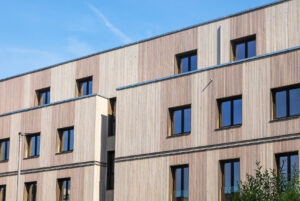
The advantages are obvious: when constructing with wood, CO2 is stored in the building over its entire lifecycle. Thus, new construction can be the solution to the climate policy challenges of our time. “To this end, we will steadily increase the share of timber buildings in our projects. In upcoming projects, we intend to use a variety of timber constructions. Our aim is to ensure 20 percent of our development pipeline of currently ca. 32,000 flats under construction and in planning, i.e. around 6,400 apartments – are timber constructions,” Daniel Riedl says.
At present, BUWOG has a development pipeline of around 32,000 apartments under construction and in planning throughout Germany. The group is also carrying out Germany’s largest timber construction project from a single source in Berlin: a sustainable neighbourhood development with a total of 166 apartments is being built on a plot of approximately 14,000 sqm in the Kaulsdorf district.
Common myths about timber construction also need to be dispelled, as fireproofing and sound insulation are now perfectly manageable. And: timber structures do not have a fundamentally shorter lifespan than buildings made of stone. There is still a need for consistent information about this. Daniel Riedl: “Our aim is to transparently communicate to consumers the opportunities of timber construction in all its varieties and to therefore contribute to further improving the acceptance of wood as a renewable raw material.”
“We aim to realise around 20 per cent of our development pipeline as timber buildings”
More on timber construction can also be discovered on the BUWOG podcast (in German):
- Episode 2: Nachhaltiges Bauen mit Holz (Sustainable Building with Timber), an interview with Prof. Ulrich Schwarz of the Eberswalde University of Applied Sciences
- Episode 18: Serielles Bauen mit Holz (Serial Building with Timber), an interview with Gropyus founder Markus Fuhrmann
This article might also interest you:
Species protection programme: sand lizards successfully relocated
Ombudsperson Anais Cosneau: “There’s no such thing as semi-transparency.”

